
A sprawling ruin of an ancient city that has been overrun by monsters, hiding the treasure of ages . . . that’s a description that fantasy role-players are very familiar with. One of the greatest inspirations for this narrative comes from Tolkien’s stories of Middle-earth, and the lost mines of Moria. In many ways, Moria inspires the modern narrative of the mega-dungeon.
Moria has been addressed in previous RPGs, including the original Middle-earth Role Playing, and Decipher’s movie-based Lord of the Rings Roleplaying Game. Different RPGs have addressed the topic from different directions, and with different constraints. The One Ring RPG has been well regarded as one of the best representations of Middle-earth in RPG form, and The One Ring 2nd edition now has its own product to address Khazad-dûm and its environs.
Disclaimer
I received a review copy of Moria: Through the Doors of Durin from Free League, and I have received previous review copies of The One Ring products from Free League in the past. I have not had the opportunity to play or run the material in this product, but I am familiar with The One Ring and have run an ongoing game of it in the past.
The One Ring – Moria: Through the Doors of DurinLead Writer Gareth Hanrahan
Solo Play Shawn Tomkin & Matt Click
Editors Francesco Nepitello, Michele Garbuggio, Lorenzo Perassi
Cover Art Antonio De Luca
Other Art Antonio De Luca, Federica Costantini, Michele Galavotti, Giuditta Betti, Andrea Tentori Montalto, Alvaro Tapia
Graphic Design Christian Granath, Niklas Brandt, Dan Algstrand
Layout Dan Algstrand
Maps Francesco Mattioli
Proofreading Brandon Bowling
Line Manager Francesco Nepitello
Project Manager Tomas Härenstam, Martin Takaichi
Brand Manager Robert Hyde – Sophisticated Games
Event Manager Anna Westerling
PR Manager Boel Bermann
Inside the Gates
This review is based on the PDF version of this product. In this form, the book is 236 pages long. The book has the following sections:
- Introduction
- And at the Gates the Trumpets Rang (campaign focus, context, and rumors)
- Journeys in the Dark (modifications to the journey rules, events, and Eye Awareness for Moria)
- Fell Foes (stat blocks and factions active in and around Moria)
- The Mansions of the Dwarves (details on various important locations and encounter sites)
- Appendix (historical context, other events regarding Moria, turning some historical events into adventures)
- Solo Play in Moria (rules for exploring Moria in solo play, managing a team of delvers)
The artwork in the book matches what has been established in other The One Ring 2e products, with stylized borders, red, black, and brown ink, color paintings introducing the individual chapters, and gorgeous, detailed line art inside the chapters. In addition to the standard artwork, including the same style of location presentation seen in other products, there is a detailed two-page spread of Moria from one side to the other, included in the endpapers of the book. There are two tracking sheets to organize information used for the solo implementation of the game included as well.
Employment Opportunities
The One Ring uses patrons to help point the player characters towards different goals and missions. This product continues that tradition. Characters aren’t cut loose to determine how to explore Moria entirely on their own. There are a number of potential patrons detailed in the book. Most of these characters are dwarves with different agendas, and patrons that are not adopted by the PCs may end up as rivals. There are also other potential patrons, as there is a certain wizard that is very interested in Ring lore and learning the secrets of The Enemy for his own purposes.
Characters aren’t just thrown into Moria with the intent to reclaim it. Patrons have specific goals and objectives. PCs may be tasked with any number of things that require them to enter the ruins:
- Rescue people captured by the orcs to work the mines
- Recover specific treasures meaningful to a patron
- Find libraries of ring-lore left behind
- Recover a cache of mithril
- Find a lost location
- Gather information on factions and locations for future planning
The feeling that reclaiming Moria is a long term project, one that won’t be accomplished after a few missions, is reinforced with the presentation of the site. There is also the unfolding dread provided by the hints of the Balrog. Before it ever shows up, the PCs are likely to find clues to where it has been, and to see some of the terrible things it has done in the past.
 I’m Not Like Other Dungeons
I’m Not Like Other Dungeons
It may not be surprising to anyone that has already engaged with The One Ring as a game, but Moria is not presented in a typical “mega-dungeon” style. There aren’t huge maps that show rooms and locations chained from one side of Moria to the other. Instead, there are several important sites detailed. Due to the massive distances between locations, there are modified journey rules to show what awaits a party of explorers moving from one section of Moria to another.
In order to navigate from one section to another, the PCs will need to learn some information about one of those locations, and its relative position to other locations they know about. Characters that attract the attention of The Eye while exploring Moria experience Revelation Episodes keyed to the story of Moria, including Dire Portents, Orc Assault, Terrors in the Dark, and Ghâsh (the Orc word for fire, indicating an encounter with the Balrog, either up close or at a distance, or with the Nameless Things that have crawled up from the depths).
For all of those locations the PCs might find between the important, established locations, there are random tables for generating chambers. These include tables to determine the physical description of the rooms, what condition the location is in, and how challenging the room is to explore.
Getting into Moria in the first place can be tricky. There are a number of ways into Moria, and there is a table showing where these locations exist, as well as what NPCs or factions from which the PCs might find the entrance. Different entrances are going to place the PCs near different established locations. Some may drop the PCs near an orc guard post, while others may lead them to a location that has been long abandoned.
There is a special redout that the PCs can find that has been hidden from other factions. This is meant to be a special event for the PCs, and it provides them with a place to rest and regroup within Moria itself. I really like this development. It’s a fun reward and an interesting development for a group of PCs that have been doing the work to find out more about the ruins.
More than Moria
Various locations are detailed around Moria. These act as staging locations for expeditions, as well as locations where PCs can encounter NPCs that may provide them with additional information. There are details on the Dimril Dale, including locations like the Mounds of Azanulbizar (the burial mounds established after the great battle against the orcs, the Dimril Stair (the great waterfalls of the dale), and the Mirrormere (a magical lake that can reveal the destiny of the person gazing into the waters).
There are also locations in the mountains beyond Moria itself, like The Citadel of Barazinbar, a location now overrun by orcs, but which served as a surface outpost of the dwarves, and a staging ground for their evacuation of the halls when Durin’s Bane attacked.
 Peoples and Personalities
Peoples and Personalities
In addition to locations and events, there are a number of personalities and factions introduced. Exploring Moria isn’t just finding lost locations or surviving obvious threats but revealing some of the ongoing stories there.
The orcs are divided into three factions. There is a charismatic orc matriarch playing all of the factions against one another, who is potentially willing to deal with outsiders. The Moria faction of orcs also counts a traitorous dwarf among their ranks, who is planning on claiming Moria as his own once he helps Sauron conquer Middle-earth.
There are humans that have captured a small outpost within Moria. There is a quirky human merchant willing to gossip and share stories that might drop clues to important developments. A wary old scavenger knows some of the ways in and out of Moria, if the PCs don’t spook him, and the son of the Master of Tharbad is seeking to plunder as much of Moria’s wealth as he can.
One of my favorite NPCs is the man-sized crow that acts as an information broker and spy, sometimes giving out useful information, but usually helping one faction or another set up an ambush on their rivals. He’s also just a bit concerned about Thoradel, the leader of the giant eagles that have set up watch on Moria since the Battle of Five Armies.
While it’s not exactly a roleplaying encounter, I also really appreciate the inclusion of a newly defined creature of legend, the monstrous centipede Angolath. They could have gone back to the well of creepy giant spiders, but instead, they introduce another similar, but different creature, which represents the concept of the horrors of the deep crawling up to the surface.
Historical Information
The core assumption of this product is that the campaign will start around 2965, about 24 years before Balin’s expedition to reclaim Moria, and about 54 years before the Fellowship passes through Moria and Gandalf confronts Durin’s Bane. That makes it about 117 years since Gandalf passed through Moria, and about 15 years before Aragorn passes through for the first time. King Dáin has forbidden any efforts to reclaim Moria at this time, meaning there will be no large-scale efforts by the dwarves, for fear of being in defiance of the king.
While exploring Moria, the PCs can learn more details about the attack of the Balrog. This wasn’t just a straightforward assault. As the dwarves attempted to use their defenses against it, the Balrog went on a rampage of terror, doing things like poisoning whole sections of Moria to kill the barricaded dwarves.
There are some potential truths that may or may not be used by the GM. Some of this involves the potential of Durin’s Bane being something other than a Balrog, or of Durin’s Bane being destroyed and replaced by something else. The Balrog’s motivations are also addressed, including the conjecture that the Balrog hasn’t joined Sauron’s efforts because it still sees its true master as Morgoth, and may even be plotting ways for Morgoth to return from the Timeless Void.
The Appendix to the book expands on some of the historical events, such as the disconnect between Balin’s foothold and his optimistic appraisal that he would be reclaiming Moria and what the outside world would know. It also looks at what Gandalf and Aragorn were likely to encounter during their travels through Moria, as well as outlining a scenario for PCs to undertake a rescue mission of Aragorn, in case the group wants to make Aragorn’s trip through the Road a bit more interesting, and to involve the PCs in a historical event.
 New Toys
New Toys
There are a number of new rules elements for groups to play with. There is a new culture of dwarves, representing dwarves not of the line of Durin. There are rules for Mithril, from what it weighs, how much its worth, and what abilities it can grant to helms, shields, or weapons. There are also several new magical treasures, including gems, rings, war horns, staffs, and circlets.
Beyond the singular creatures introduced, there are several new threats detailed. There are stats for the Orcs of Udun, those who venerate the Balrog. There are dwarves afflicted with the delusions that Moria is as it was in elder days. There are ash-wraiths, carrion bats, ring-wights (undead corrupted the dwarven rings), and stone toads. The marrow-eaters, creatures that have followed the Balrog up from the depths, remind me just a wee bit of deep ones.
We get stats for Durin’s Bane, the Balrog, but the assumption isn’t that the PCs are ever going to be able to go toe to toe with what is effectively a demigod. There are a few artifacts included that are noted as being helpful if you do want to stage a battle where the PCs may attempt to throw down with the eternal flame demon.
All By Yourself
Free League published a supplement for The One Ring called Strider Mode, allowing players to use the rules to explore Middle-earth using various oracle tables, which was partially designed by the creator of the Ironsworn game. There is an extensive section for solo play that is similar to, but more focused, than Strider Mode, in this product. At 37 pages long, this is much more detailed than the Strider Mode supplement.
Solo play in this case isn’t just a way of playing the regular game but with one player. The assumption of these rules is that you are portraying a dwarf sworn to Balin during the reclamation of Moria. You create your primary character, but then also develop a team of additional explorers for you to control.
Rules touch on a variety of topics:
- Gathering allies with different talents
- Assigning quirks to expedition members
- Mission planning
- Exploring, taking harm, and managing fatigue
- Random lore tables
- Fortune and ill-fortune tables for random events and developments
- Battles
- Duels
- Solo Journey events
- Specialized Fellowship Phase events for solo mode and reclaiming Moria
The other members of your expedition don’t track their statistics as granularly as your character does. Instead of individual points and scores, there are condition tracks for these characters. Several statistics you generate will be created for the group, as a whole, rather than for the individual. In many cases, the group is acting similar to a single character, with conditions assigned or removed based on the resolution of actions.
The goal is to build a team of 12 allies, advanced to Hardened experience, and then use that team to undertake one last, major push into Moria. In the end, after helping Balin establish this foothold in Moria, everyone will be wiped out. This helps you tell the story of Balin’s expedition, but it’s not a story you can win. You’re working toward telling the story of the high point of the reclamation, which you can seed into the game as details at a later date.
Speak, Friend, and Enter This product takes what could be an intimidating, sprawling location, and makes it into a place with a compelling story that provides a home for an extended campaign in The One Ring.
There is a lot in this product to like. Not only does it give a comprehensive, but not overwhelming, overview of Moria, it also makes Moria even more engaging by connecting locations and events to memorable NPCs. For those GMs that are overwhelmed with a place to start a campaign in this time period, this provides a focused narrative that is firmly rooted in the timeline of Middle-earth, with enough room for the group to create their own details. Even the solo play rules push toward the same objective, filling in details to a story where we know the beginning and the end, but not much of the middle. This product takes what could be an intimidating, sprawling location, and makes it into a place with a compelling story that provides a home for an extended campaign in The One Ring.
Drums in the Deep
There isn’t much that doesn’t work well in this book. For players not invested in solo play, it does take up a significant portion of the book. This is going to provide solo players with a lot of value, but many of the oracles and event generators, as well as the structured story of Balin’s refounding efforts, could have been worked into the standard rules as well. The larger campaign length adventure narrative is largely left to the solo rules section, with the group rules focusing on telling an emergent story based on what missions the PCs accept and what mysteries they unravel.
Strongly Recommended–This product is exceptional and may contain content that would interest you even if the game or genre covered is outside of your normal interests.
Moria: Through the Doors of Durin does a lot of things right. Not only is it going to be a solid campaign experience for people playing The One Ring, serving as an example of what the game can be and the kind of stories it can facilitate telling, but it is also a great example of making dungeon adventures into campaigns with life and personality. GMs of The One Ring will receive a toolkit to explore Middle-earth, and people that don’t currently play The One Ring may still get some ideas about how to present dungeon sites, history, factions, and the faces of those factions.







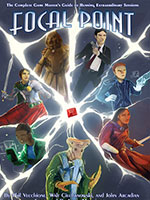
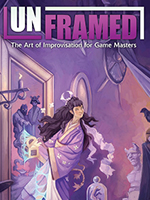

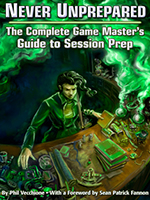
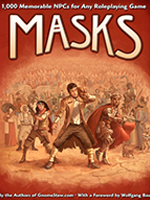
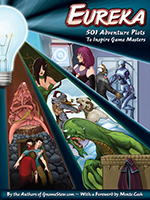


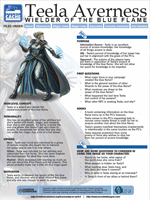
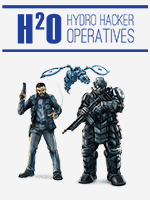
Good product but the font too small for old eyes.